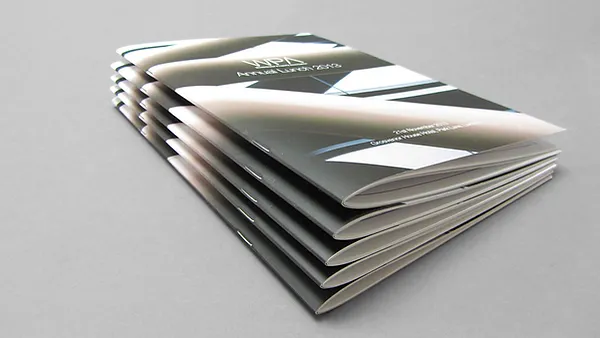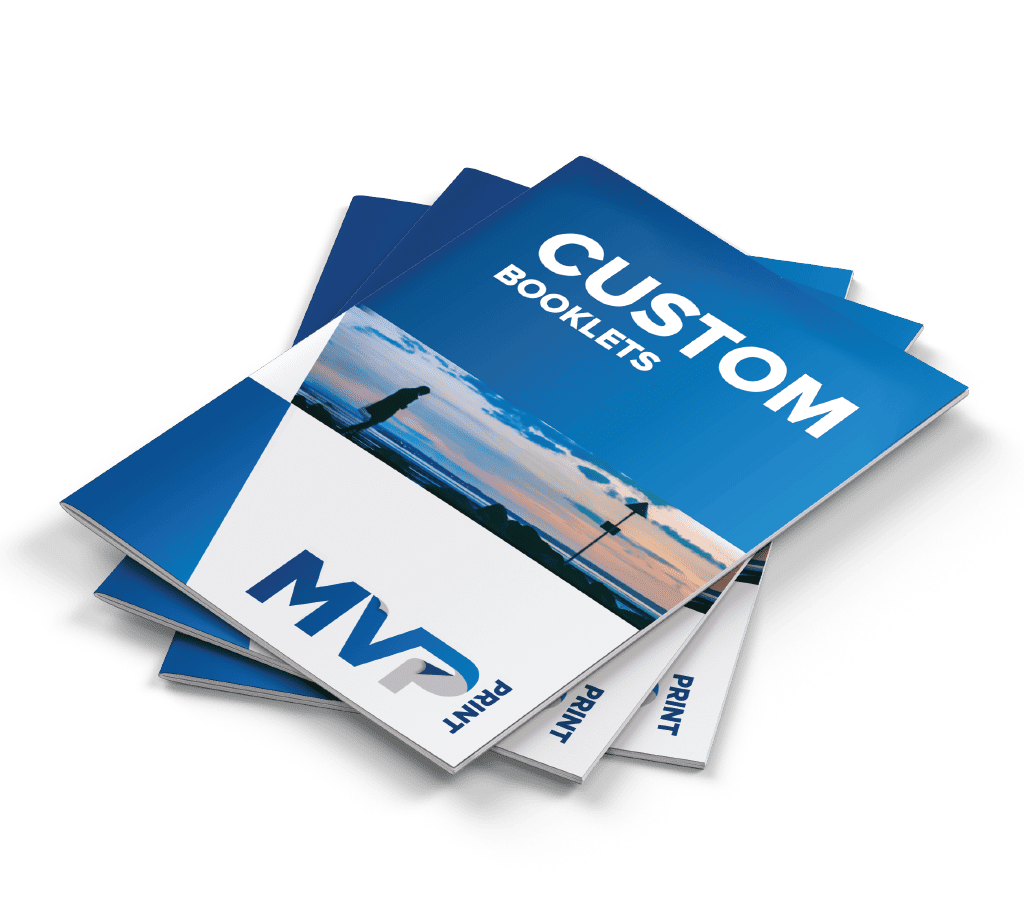
Welcome to the world of saddle stitching, where binding meets sustainability. In today’s fast-paced world, finding eco-friendly solutions is crucial to protect our environment. At MVP Print, we believe in harnessing the power of saddle stitching to create beautiful binders, brochures, and booklets while minimizing our ecological footprint.
Saddle stitching is a binding method that prioritizes the environment. Unlike traditional wire stitching, it uses thread to hold pages together, making it a greener alternative. Our team at MVP Print is committed to implementing sustainable stitching practices that not only benefit the environment but also deliver exceptional quality and durability.
In this article, we will explore the rising trend of eco-conscious binding with stitching and how it is revolutionizing the printing industry. We will also provide a comprehensive primer on stitching, delve into MVP Print’s commitment to sustainable practices, and highlight the environmental advantages of saddle stitching over traditional binding methods.
Join us in this journey towards a greener future in binding. Together, we can make a difference and create a sustainable world through innovative and eco-friendly practices.
The Rise of Eco-Conscious Binding with Saddle Stitching
In recent years, there has been a significant rise in eco-conscious binding practices, and stitching is at the forefront of this movement. As more businesses and individuals prioritize sustainability, saddle stitching has gained popularity due to its eco-friendly nature and durability. This section will explore why eco-conscious binding with saddle stitching is on the rise.
Understanding Saddle Stitching: A Primer
In order to fully grasp the concept and importance of stitching, it is essential to have a comprehensive understanding of its key components and processes. This section provides a step-by-step guide to stitching, shedding light on what it is, the anatomy of a saddle stitched book, and the materials used in the process.
What is Saddle Stitching?

Saddle stitching is a binding technique that involves using thread instead of wire stitching to secure folded pages together. The name “saddle stitching” originates from the traditional method of placing the book pages over a saddle-like structure during the stitching process.
Anatomy of a Saddle Stitched Book
A saddle stitched book typically consists of folded sheets of paper or other materials, known as signatures. These signatures are then stacked on top of each other, creating a booklet-like structure. The folded edges of the pages are aligned and stitched together through the centerfold, resulting in a visually pleasing and functional binding.
Materials Used in Saddle Stitching
The materials used in stitching play a crucial role in the durability and longevity of the bound product. Common materials include high-quality threads, such as linen or cotton, which provide strength and flexibility to withstand frequent handling. The choice of paper or other materials for the pages also contributes to the overall aesthetic and durability of the saddle stitched product.
By gaining a primer on stitching, readers will develop a solid foundation to explore the subsequent sections, which delve further into the sustainable and environmental aspects of stitching.
MVP Print’s Commitment to Sustainable Saddle Stitching

MVP Print, a renowned printing company, is dedicated to implementing sustainable stitching practices. With a strong commitment to the environment, MVP Print ensures that every step of the saddle stitching process is eco-friendly and promotes a greener future in binding.
1. Eco-Friendly Materials: MVP Print carefully selects high-quality, eco-friendly materials for stitching. By using recycled paper and non-toxic inks, they minimize environmental impact without compromising on the durability or aesthetics of the finished product.
2. Innovative Stitching Practices: MVP Print continuously explores innovative stitching techniques to reduce waste. By optimizing the use of thread and streamlining the stitching process, they minimize material consumption, making their stitching even more sustainable.
3. Contribution to the Green Printing Revolution: MVP Print actively supports the green printing revolution by promoting sustainable stitching practices. They believe that their commitment to environmentally friendly binding methods will inspire other printing companies to adopt similar practices, leading to a collective effort in reducing the industry’s carbon footprint.
MVP Print’s dedication to sustainable saddle stitching sets them apart as leaders in the printing industry. By prioritizing eco-friendly materials and implementing innovative practices, they contribute to a more sustainable future in binding.
| Aspect | Description |
|---|---|
| Eco-Friendly Materials | MVP Print selects recycled paper and non-toxic inks for saddle stitching. |
| Innovative Stitching Practices | MVP Print optimizes thread usage and streamlines the stitching process to minimize waste. |
| Contribution to the Green Printing Revolution | MVP Print actively promotes sustainable stitching practices and aims to inspire other printing companies to adopt eco-friendly binding methods. |
Environmental Advantages of Saddle Stitching Over Traditional Binding
Saddle stitching offers several environmental advantages over traditional binding methods. By choosing saddle stitching, you can contribute to a more sustainable future while enjoying the benefits of this efficient and versatile binding technique.
Reduced Material Waste
Compared to traditional binding methods, saddle-stitching minimizes material waste. This is because saddle stitching uses fewer materials, such as wire, glue, or adhesive tape. By reducing waste production, saddle stitching helps conserve resources and reduce the environmental impact of the binding process.
Energy Efficiency
Another environmental advantage of saddle stitching is its energy efficiency. This binding technique requires less energy compared to other binding methods, such as perfect binding or spiral binding. The reduced energy consumption translates into lower carbon emissions, contributing to a greener and more sustainable printing and binding industry.
Recyclability
Saddle stitching also offers the advantage of recyclability. The materials used in stitching, such as paper and thread, are easily recyclable. This means that once the saddle-stitched product reaches the end of its lifecycle, it can be recycled and transformed into new paper products, reducing the demand for virgin materials and minimizing waste sent to landfills.
By choosing stitching over traditional binding methods, you can enjoy the environmental advantages of reduced material waste, energy efficiency, and recyclability. Embracing sustainable practices in the printing and binding industry is a crucial step towards a greener future.
The Lifecycle of Saddle Stitched Products
Stitched products have their own lifecycle, just like any other product. This section will explore the various stages of the lifecycle of saddle stitched products, highlighting the sustainable aspects of this binding method.
The Production Stage
In the production stage, saddle stitched products are meticulously crafted using eco-friendly materials and methods. From selecting sustainable paper and thread to implementing efficient manufacturing processes, every step is aimed at reducing waste and minimizing the environmental impact.
Longevity and Durability
Saddle stitched products are known for their longevity and durability. Unlike other binding methods, stitching ensures that pages are securely held together, preventing easy tearing or detachment. This extends the product’s lifespan, reducing the need for frequent replacements and contributing to a greener environment.
Recyclability
When saddle stitched products reach the end of their lifecycle, they can be easily recycled. The use of thread instead of wire or glue makes the recycling process simpler and more efficient. Saddle stitched materials can be sorted and recycled with paper waste, making them a sustainable choice for green-conscious consumers.
Waste Reduction
Saddle stitching also promotes waste reduction throughout the product’s lifecycle. The precise stitching technique ensures minimal material wastage during the binding process. Additionally, saddle stitched products can be produced in smaller quantities, reducing the risk of excess inventory and unsold items that may end up as waste.
Overall Sustainability
The lifecycle of saddle stitched products exemplifies the overall sustainability of this binding method. From production efficiency to waste reduction and recyclability, stitching offers a greener alternative to traditional binding methods. By choosing saddle stitched products, consumers can support sustainable practices and contribute to a more environmentally friendly future.
The Art of Saddle Sewing: Combining Tradition with Innovation
Saddle sewing is a centuries-old technique that blends tradition and innovation to create exquisite and durable bound materials. This method, also known as saddle stitching, involves using needle and thread to create secure and aesthetically pleasing bindings. In this section, we will explore the process of saddle sewing, showcasing the craftsmanship and attention to detail that goes into each stitch.
To begin the saddle sewing process, skilled craftsmen use stitching ponies, which are wooden clamps that hold the material in place. This traditional tool ensures stability and precision during the sewing process, allowing for consistent and even stitching.
The selection of stitching threads plays a crucial role in saddle sewing. By choosing eco-friendly stitching threads made from sustainable materials, artisans uphold the principles of environmental responsibility while maintaining the integrity of their craft. These innovative threads not only offer strength and durability but also align with the eco-conscious movement sweeping the binding industry.
Best Practices for Environmental Management in Printing and Binding

To ensure sustainable practices in printing and binding, it is essential to follow best practices for environmental management. By implementing these practices, businesses can reduce their environmental impact and contribute to a greener future.
Selecting Sustainable Inks and Toners
When choosing inks and toners for printing, opt for environmentally friendly options that are low in volatile organic compounds (VOCs) and free from harmful chemicals. Look for certifications such as ECOLOGO or Green Seal to ensure the products meet recognized eco-friendly standards.
Energy Conservation in Print Production
Reducing energy consumption is crucial in the printing and binding process. Implement energy-efficient practices such as using energy-saving/eco-friendly equipment and optimizing production schedules to minimize idle time and maximize productivity. Additionally, consider investing in renewable energy sources, such as solar panels, to power your printing operations.
The Role of Digital Technologies in Reducing Environmental Impact
Digital technologies have revolutionized the printing and binding industry, offering more sustainable alternatives. Embrace digital solutions like online PDF proofs and document sharing platforms to minimize paper waste. Additionally, utilize digital printing technologies that produce fewer emissions and require less energy compared to traditional printing methods. By embracing digital innovations, businesses can significantly reduce their carbon footprint.
Conclusion
In conclusion, stitching offers sustainable and eco-friendly practices for binding. With its use of thread instead of wire stitching, saddle stitching reduces the environmental impact of binding projects. By choosing stitching, consumers can make sustainable choices that contribute to a greener future in the binding industry.
Empowering consumers to make environmentally conscious decisions is crucial for the industry’s progress towards sustainability. When consumers choose saddle stitching, they send a powerful message to the market that sustainability matters. By supporting businesses like MVP Print, who prioritize sustainability and quality in their saddle stitching practices, consumers become catalysts for positive change in the industry.
MVP Print is at the forefront of this movement, envisioning a world where sustainability and quality go hand in hand. Their commitment to eco-friendly materials, innovative stitching practices, and a value-driven approach reflects their dedication towards a more environmentally friendly approach to binding. Through their leadership, MVP Print is inspiring other businesses to adopt sustainable saddle stitching practices.
As we look towards the future, it is clear that stitching plays a crucial role in building a greener binding industry. By choosing stitching and supporting businesses like MVP Print, consumers can make a significant impact on the environment. Together, we can create a sustainable and eco-friendly future in binding.








